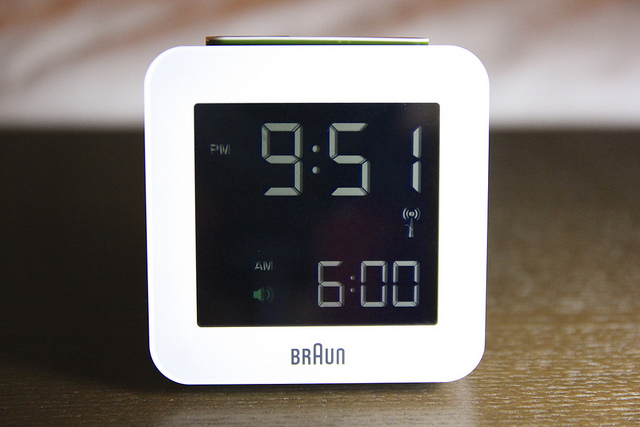Work comp began life as a Hyundai but has evolved into a fully loaded Mercedes. Comp is no longer simple -- and simpler would be much better.
I was only home from WCRI's annual conference a little more than a day when I saw a reminder that "simpler" systems often offer more effective solutions than more complex ones that are supposed to make our lives better. It was a lesson that overlays easily on the world of work comp with its all-too-complex and rigid structures.
My wife and I were returning home from breakfast at a local restaurant Sunday morning when we stopped by a grocery store for a quick errand. We had taken my wife's car, and as we stopped she took the opportunity to try to reset the auto's clock, because Daylight Savings Time had "sprung us forward" an hour the night before. My wife drives a 2013 Mercedes Benz. It is by no means a top-of-the-line Mercedes, but it still has a plethora of electronic systems and services customary in a luxury car of this day. The car must be stationary to access the clock controls and other system features, so this was a good time to tackle this task.
I watched as she scrolled through the menus on her digital display behind the steering wheel, looking for the correct one. After a few moments, she remembered that her previous car, also a Mercedes, controlled the clock via the main instrument display gauge. The clock control on this Mercedes, on the other hand, was to be found via a large knob on the center console. That knob controls a variety of commands on the audio and information center display to the right of the instrument panel. She decided very quickly that trying to find the clock control was a hassle and that she would just "get it later."
Juxtapose this scenario with my car, a 2009 Hyundai Santa Fe. To reset the clock for springtime DST on my unassumingly low-tech ride I simply need to press a button. Once.
The clock in my car, near the top center of the dashboard, has three buttons next to it. One resets the clock to the next increment hour. The other two handle both hours and minutes on the clock. Pushing either adjusts the appropriate time segment with ease. Apparently, the Koreans who engineered my car, and the Alabamians who built it, are not as concerned with my safety as those overprotective Germans. I can change the clock whether the car is moving or not. I could be careening down the interstate at 90mph, cellphone wedged between my ear and my shoulder (no Bluetooth) and holding a doughnut firmly clenched in my left hand. A quick reach and push of a simple button still accomplishes on my humble Hyundai what others can only dream of -- an automobile clock set at the correct time.
Admittedly, fall is more difficult, as I have to hold that button a few seconds while it scrolls forward 11 digits to actually set the clock back one hour. No AM or PM in my car, baby. The Koreans know I can tell the difference.
Metaphorically, the workers' compensation industry, born of the grand bargain in 1911, started life as a Hyundai but has since evolved into a Mercedes. Nothing in comp is simple anymore. At the Workers' Compensation Research Institute Annual Conference, attendees were treated to a myriad of statistics and analysis related to a variety of topics in workers' comp. We learned that despite complex legislative efforts to control outrageous abuses by physicians who dispensed their own drugs, doctors in Illinois simply changed the dosages to bypass the law. We learned that states that set low fee schedules see increased costs because of more expensive office visit codes as well as an increase in doctors office visits. There were many similar topics and discussions, from California's independent medical review (IMR) process to Florida's exclusive remedy challenges. The entire conference highlighted the complexities of managing a process-intensive system that still at times manages to lose people through a somewhat tangled safety net.
It is another perfect example of how complexity and process can eventually stumble and collapse under their own weight, and every attempt to fix the previous crisis simply adds more layers of complication, furthering the potential for failure and disappointment.
Sometimes, simple is better. Pay doctors a fair wage, and reward the ones who perform the best by using them more often. This would stop much of the gamesmanship we see in the pricing of medical services today. Improve and facilitate communications between the employer and the injured worker. Better communication between these primary parties can reduce lost time and litigation. Train adjusters well, keep their workload reasonable and let them actually manage a claim. This would minimize dependency on a plethora of specialty firms, each performing specific tasks that empowered adjusters of yore used to handle. Streamline regulation, making the care of the injured the most important task rather than focusing on useless and resource-sucking paperwork. A simpler, focused effort in these areas would fairly quickly see improved results for all the players in comp that really matter.
I can speak personally of the benefits of simplification. The car I owned prior to my Hyundai was a BMW Z4 Roadster, with sequential manual gearbox transmission. While it was an incredibly fun car to drive, I never could change the stupid clock. Setting it in that car was not dissimilar to following a pre-flight checklist for the space shuttle. It was much easier to leave it alone and let it only be right for 1/2 of the year.
But while getting it right half the time may be acceptable for the clock in your car, it is an abysmal concept where injured human beings are concerned.


